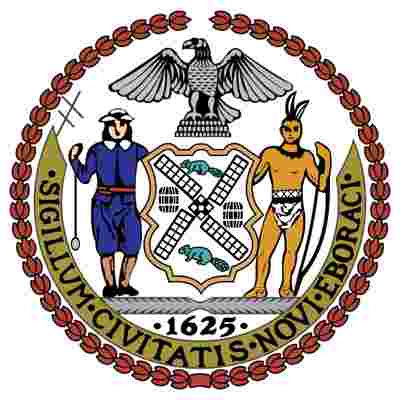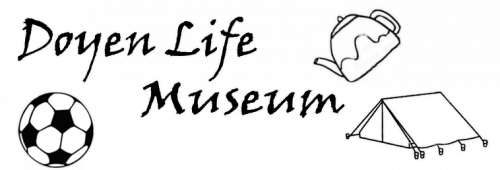1. Have students brainstorm about New York City, past and present. Draw a simple T-chart on the board with heads “Past” and “Present.” Write the title “New York City” above the T-chart. Ask students what they think of when they think about New York City today and in the past. Have them brainstorm words, phrases, and images. Write students’ ideas on the board in the appropriate columns. Elicit responses from them such as tall buildings, Times Square, Statue of Liberty, and immigration . 2. Show students the New York City seal. Project the New York City seal. Explain to students that a seal is an official mark. This seal is the official seal for New York City. First, ask students to describe everything they see on the seal. Then, ask:

Who do you think the people are? (Dutch sailor, Native American)
What clues can help you to identify the people? (Dutch colonial clothing, oar or paddle; Native American dress, bow and arrow)
What kinds of animals do you see? (beavers, eagle)
What other items do you see? (barrels, windmill)
Why do you think these images are on the New York City seal?
Tell students you will investigate the last question as a class. 3. Use the map to introduce the concept of trade . Give each student a copy of the map Early Dutch Trade in North America. Ask students to identify the location of the Atlantic Ocean , Europe, and North America. Then ask students if they have ever traded, or exchanged, one thing for another thing. Prompt them to think about trading one type of food for another, or money for an item they bought. Invite volunteers to give examples, and make sure all students understand the concept of trade. Explain that people will make a trade when they want something they think is valuable. People will also travel great distances to get valuable trade good s. Point out that in the 1600s, people traveled all the way across the Atlantic Ocean from Europe to North America to trade goods. 4. Distribute the worksheet Trade in New Amsterdam. Give each student a copy of Trade in New Amsterdam. Explain to students that the reading passage explains why sailors traveled between the Netherlands in Europe and New Amsterdam (early New York City) to trade with Native Americans. Have students take turns reading aloud a sentence or paragraph to the class. Ask students to follow along and circle any unfamiliar words and underline sentences they have questions about. Review any difficult vocabulary and sentences together. Then have students answer the comprehension questions independently. Review the answers as a class. 5. Have students add symbols to the map to illustrate trade in the 1600s. Have students use their map Early Dutch Trade in North America to identify the locations of Amsterdam and New Amsterdam described in the reading. The cities are marked with dots. Have students write the labels. Then write the information below on the board for students to refer to. Have students add this information to their map as a map key. Then have them add these symbols to the map in the appropriate locations to show trade between the Dutch and Native Americans in the 1600s.
Triangle—where the Dutch sailors came from
Star—where the Native Americans lived
Arrow—the path that the Dutch sailors traveled to trade with the Native Americans
6. Have students reflect on what they learned. Have a whole-class discussion about what students learned. Ask:
Based on what you’ve learned, why is there a Dutch sailor, a Native American, and a beaver on the New York City seal? (These people and animals were important in the early history of New York City as a trading port.)
Does the information you have learned make you think about New York City in a new way? Explain.
How are New Amsterdam in the 1600s and New York City today similar? (New York City is still a place where different culture s meet and a port for international trade.)
